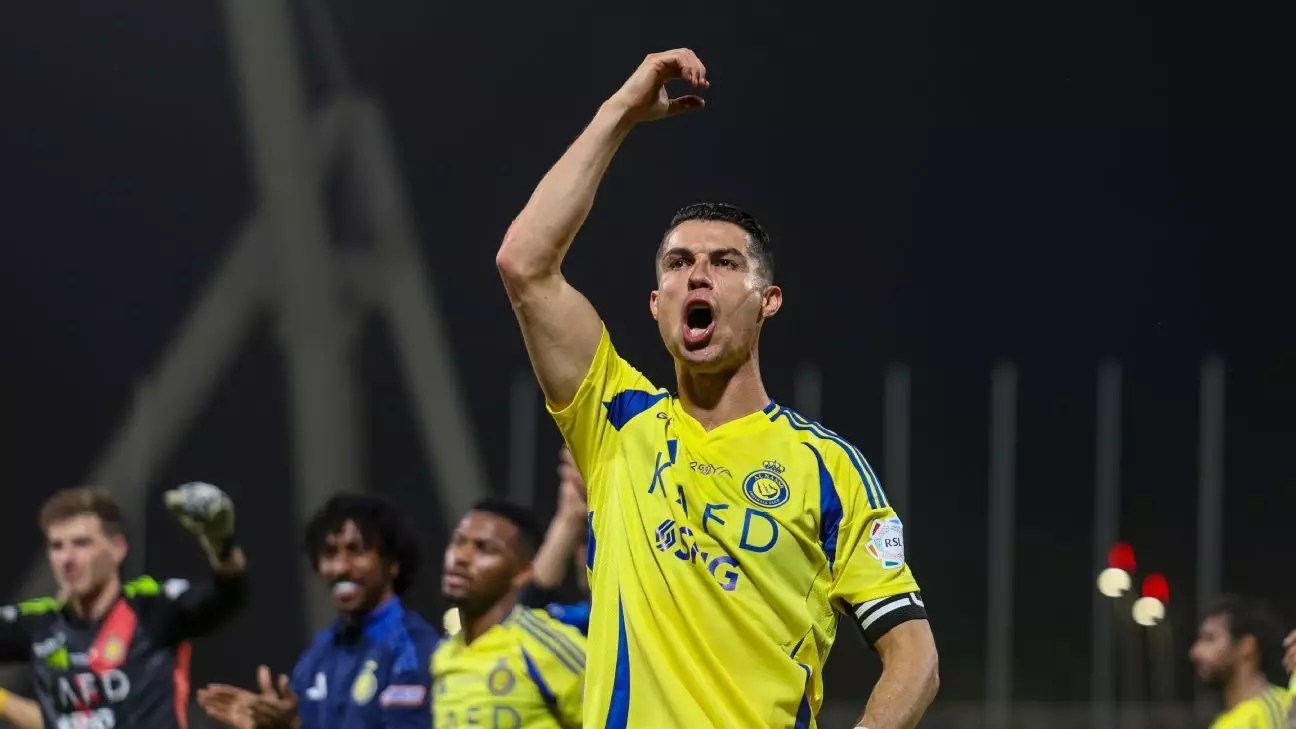In a surprising twist of events, Cristiano Ronaldo, now 40, remains at the forefront of football discussions. Al Nassr, the Saudi Pro League club, has reportedly extended an enticing two-year contract offer to the iconic forward. The implications of his potential stay in Saudi Arabia are immense—not just for Ronaldo, whose contract runs until June 2025, but for the football world at large, where veteran players are increasingly sought after in leagues once perceived as secondary.
Ronaldo’s form has been impressive, showcasing his ability to score with a remarkable tally of 30 goals in just 34 matches this season. The legend himself has expressed a determination to remain with Al Nassr until the twilight of his career, bringing into focus questions regarding the future of superstar athletes in less traditional football markets. As Ronaldo hints at a career that could extend “soon, or in two or three years,” one cannot help but ponder whether he is paving the way for other aging stars to seek lucrative contracts in burgeoning leagues.
Barcelona’s Dilemma: A Battle for Luis Díaz
Meanwhile, in another corner of the footballing world, Barcelona finds itself entangled in a precarious situation concerning Liverpool’s Luis Díaz. The Colombian winger is highly coveted by the Catalan giants but faces stiff competition from deep-pocketed Saudi clubs that threaten to disrupt traditional transfer pathways. Barcelona’s interest isn’t new—they attempted to secure Díaz’s signature last summer and have kept communication channels open with the player’s representatives.
However, the pervasive financial influence of the Saudi Pro League poses a serious challenge for a club like Barcelona, which has historically relied on its rich talent pipeline and a savvy scouting system. The possibility of a substantial offer from the Saudi league risks sidelining the La Liga side’s ambitions to enhance their squad with dynamic talents like Díaz. What does this mean for the future of football transfers, especially among European clubs who once enjoyed precedence?
The Italian Attraction: Garnacho, Sudakov, and the Search for Young Talent
In Serie A, Napoli is actively pursuing potential signings to fortify their squad. The club has its sights set on Manchester United’s Alejandro Garnacho, a young talent who has already garnered attention for his goal-scoring prowess. With a previous attempt to sign him foiled by circumstances surrounding Khvicha Kvaratskhelia’s move to Paris Saint-Germain, Napoli is keen on securing the 20-year-old before he becomes even more indispensable at Old Trafford.
Additionally, Napoli is tracking Georgiy Sudakov from Shakhtar Donetsk as a versatile midfielder. This pursuit speaks volumes about the evolving strategies in Serie A, which increasingly aims to blend youthful exuberance with strategic gameplay—an initiative some clubs are particularly focused on. The shift towards younger, dynamic players could redefine talent acquisition for these clubs as they navigate their own financial constraints and ambitions in the upcoming seasons.
Market Movements: The Declining Power Dynamics
Chelsea seems poised to make strategic moves in the summer transfer market. The club is reportedly leading the race for Ipswich striker Liam Delap, who has demonstrated flourishing potential with 12 goals this season. Having a history with the club that previously signed him, the transfer could symbolize a new direction for Chelsea under the management of Enzo Maresca.
But Chelsea’s interest isn’t limited to forward players. The Blues are also eyeing Vangelis Pavlidis from Benfica, showcasing the club’s desire to rejuvenate its attacking lineup. However, they are not alone; Newcastle United has also emerged as a potential destination for the Greece international.
These transactions hint at a shifting landscape in football—we are witnessing a battle not just for established stars but also for burgeoning talent. Clubs with weaker financial clout, like Napoli and Benfica, continue to face stiff challenges from more powerful competitors, thereby forcing them to rethink their strategies to maintain competitive squads.
Reassessing Traditional Alliances and Modern Transfers
As Liverpool and Manchester City embark on their own transfer journeys, the dynamics within European clubs continue to evolve. Liverpool is reportedly eyeing Inter Milan’s Nicolò Barella, reaffirming its commitment to fortifying its midfield. However, the financial implications of such moves are noteworthy; the price tag surpasses €100 million, raising concerns about sustainable investment in player acquisitions.
Manchester City, on the lookout for reinforcements, has identified Tottenham’s Destiny Udogie alongside Juventus’ Andrea Cambiaso as potential targets. The shifting preferences for full-backs, coupled with the priority to replace Kevin De Bruyne, illustrate that even elite teams are constantly reassessing their strategies to adapt to the changing landscapes in football.
The 2023 transfer season is ultimately a reflection of a larger narrative—the evolution of football itself. Clubs, players, and leagues are all navigating uncharted waters as financial power dynamics shift and the priorities of players evolve. The conversations around signings are now more than merely strategic maneuvers; they are indicative of an entirely new era in the world of football.


Leave a Reply